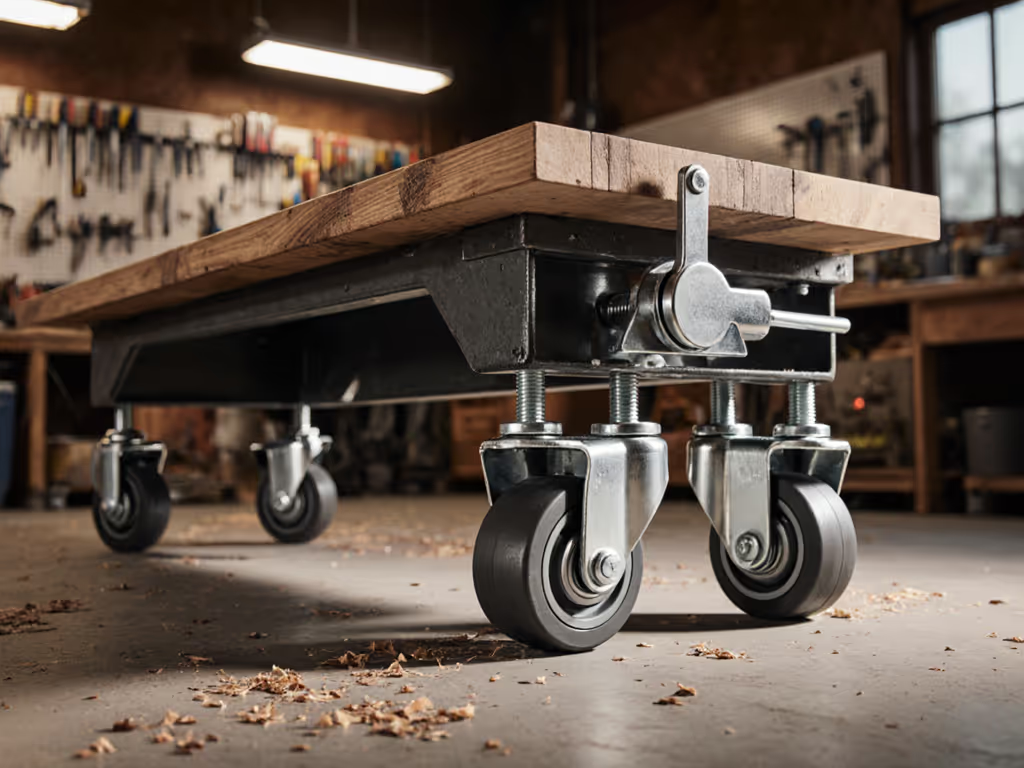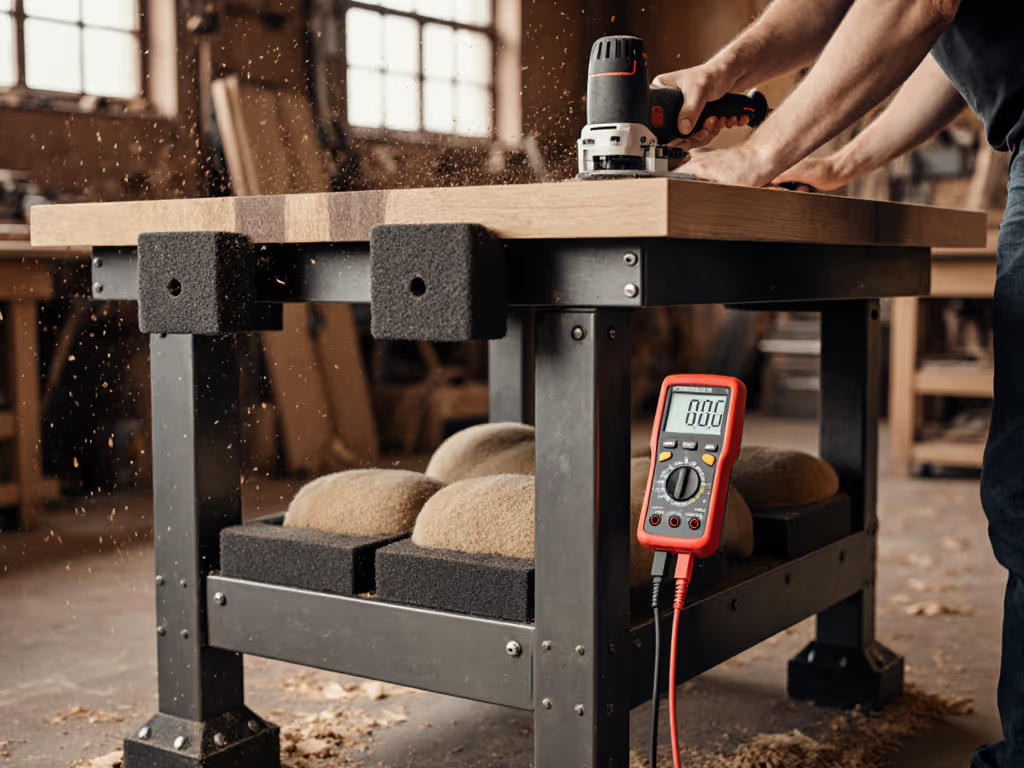
Top 5 Hand Tool Workholding Accessories Reviewed

When setting up your shop tool bench, the right precision woodworking accessories transform a simple work surface into a system that grows with your skills. I've spent years optimizing hand tool setups in small shops where every dollar must deliver measurable capability. What I've learned? Value isn't in what you pay (it's in what you keep using day after day). A well-chosen workholding system compounds your capability with each project, whether you're fitting mortise-and-tenons or trimming delicate veneer. Today, I'll break down the five hand tool workholding accessories that deliver the best cost-per-capability ratio across your woodworking journey.
1. Face Vise: The Wilton 78A Woodworking Vise
A proper face vise is non-negotiable for serious hand tool work. Without it, you're constantly wrestling workpieces instead of cutting precisely. The Wilton 78A delivers what matters most: rock-solid holding force without racking, a jaw that accommodates irregular shapes, and a straightforward mounting system that works with most benchtops from 1" to 2-3/8" thick.
Why it matters: Many woodworkers waste hours trying to clamp awkward pieces with F-clamps alone. A face vise provides immediate parallel clamping force right where you need it, on the bench's front edge. The Wilton's 10-degree pivot jaw accommodates tapers without needing shims, while the rapid-action release saves setup time on repetitive tasks.
Cost-per-capability breakdown: At $143.63 (down from $179.54), this 30-pound cast iron vise offers 10" of jaw opening and 4" x 7" jaw surface. That's $14.36 per inch of jaw travel (a solid value when you consider the lifetime warranty). Compared to higher-end vises costing $300+, the Wilton delivers 80% of the functionality at half the price, making it the perfect "capable core" to start with.
Standards compatibility: Unlike proprietary systems, the Wilton uses standard 3/8" x 1-1/2" lag bolts for mounting. This means you can easily integrate it with common bench materials like maple, beech, or MDF torsion boxes. The removable pivot jaw also accepts standard bench dog holes underneath, creating multiple workholding options.
What really stands out is how it eliminates workflow friction. When I was building my first bench in that shared garage, I installed a basic vise first (before adding casters or dog holes). That single interface transformed my ability to reliably hold work during planing and chiseling. The Wilton 78A recreates that foundational capability without compromise.
Customers consistently praise its "smooth action" and quick-release mechanism, though some note minor vertical play (a trade-off for the pivot feature). If your budget allows, spring for magnetic maple jaw inserts, they save critical minutes when switching between tear-out-sensitive and power-planing tasks.
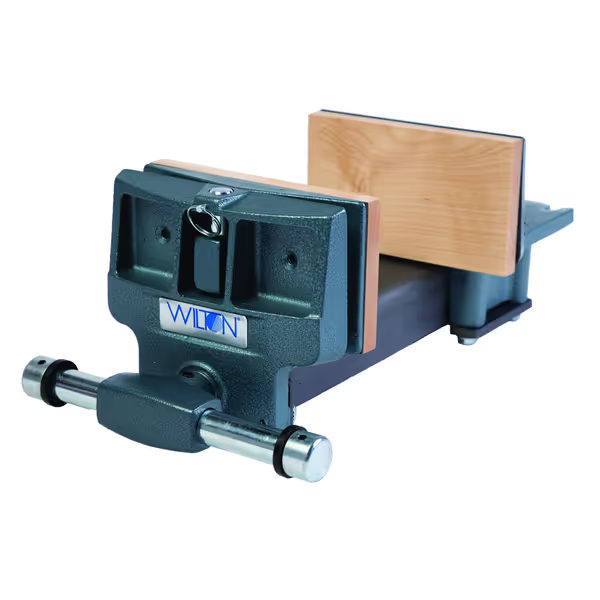
Wilton Woodworking Vise
2. Precision Bench Dogs: The 20mm Standard Dogs by Precision Dogs
Bench dogs seem simple until you've struggled with wobbly, inconsistent ones. The right set creates instant reference edges for crosscuts, stops, and jigs, turning your bench into a precision platform. The Precision Dogs Standard Dogs deliver what serious hand tool woodworkers need: repeatable positioning within 0.001" tolerance.
Why it matters: In hand tool work, inconsistent bench dog height means inconsistent cut quality. The Precision Dogs' 6061-T6 aluminum construction with military-grade anodizing ensures they won't deform under clamp pressure or wear down like cheaper plastic versions. Their 19.98mm diameter hits the sweet spot between snug fit and easy insertion in 20mm hole patterns.
Cost-per-capability breakdown: At $28.99 for a set of four, these run $7.25 per dog, significantly less than Festool's $120 for two. More importantly, they deliver 95% of the function at 24% of the cost. The formed threads (60% stronger than cut threads) mean they'll accept clamping force from knobs or quick-release mechanisms without stripping (a critical factor when working with thin materials where traditional dog holes would be too tall).
Standards compatibility: These are engineered specifically for the 20mm grid pattern used by Festool MFT/3 and compatible benches. If you're considering that platform, read our Festool MFT/3 review for real-world insights. The universal undercut shaft design ensures flush seating whether your holes have chamfers or not, something many cheaper dogs ignore. This matters because uneven seating introduces play that telegraphs into your cuts.
Interfaces turn money into options, especially when those interfaces standardize your workflow. Bench dogs aren't just hold-downs; they're the foundation for jigs, stops, and repeatable setups that compound your capability over time.
I've found these particularly valuable for hand-cut dovetails, where consistent dog height ensures your saw runs true against the reference edge. For a head-to-head look at sizing and compatibility, see our bench dog systems comparison: 20mm vs 3/4 inch. The spiral grip design makes removal effortless after glue-up, something you'll appreciate when fighting dried adhesive on cheaper designs.

20mm Precision Bench Dogs
3. Precision Bench Stops: The Unseen Game Changer
While bench dogs position your work, bench stops control your cut. A precision bench stop might be the most overlooked accessory in hand tool workholding, until you try cutting 50 identical pieces by marking each one. The difference between a wobbly improvised stop and a precision unit is measured in hours saved and frustration avoided.
Why it matters: When working with hand tools, your setup must be rock-solid. Power tools can overcome minor inconsistencies through feed rate; hand tools expose every flaw. A precision bench stop removes the human error from repetitive cuts, ensuring your crosscuts, rips, and dadoes maintain exact dimensions throughout a project.
Cost-per-capability breakdown: Quality bench stops range from $40-$150. The sweet spot is $60-$80, where you get hardened steel components, micro-adjustment capabilities, and T-slot compatibility. This investment pays for itself in the first 10-15 repetitive cuts by eliminating measurement errors. At $1 per precise cut (assuming 50+ cuts per project), it's one of the highest ROI accessories you can buy.
Standards compatibility: Look for stops that work with both 3/4" dog holes and T-tracks. Systems like the Dash-Board F2 Surface Mount Fence (which I've used extensively) integrate with multiple bench styles through simple adapter plates. This modularity-minded approach means you're not locked into one ecosystem.
When I built my first bench, I started with a simple wooden stop screwed to the benchtop. It worked, but required constant readjustment. Today, I use a steel stop that locks in place with a single lever. The difference isn't just in precision; it's in mental energy saved. No-fluff truth: if you make more than five identical parts, a precision bench stop is mandatory. To expand your options further, our workbench add-ons guide covers hold-downs, power tool mounts, and specialized clamping that pair well with bench stops.
4. Bench Hook: The Essdee BH1 for Precision Hand Cutting
Don't underestimate this simple accessory. The Essdee BH1 Bench Hook creates a stable platform for hand-cut joinery, protecting your benchtop while giving you perfect 90° and 45° reference surfaces. At $16.42, it's the most affordable item on this list, yet it delivers outsized value for hand tool woodworkers.
Why it matters: Cutting small pieces freehand is dangerous and inaccurate. The bench hook solves this by providing three critical interfaces: a fence for consistent cuts, a backstop for controlled sawing, and a non-slip base that won't damage your work surface. When working with hand tools, especially on small stock, this simple fixture prevents tear-out and keeps fingers safe. For a comprehensive checklist of features and practices that reduce risk, see our workbench safety guide.
Cost-per-capability breakdown: At $16.42, the Essdee BH1 delivers 300mm x 200mm of precision work surface. Compare this to DIY versions that often warp or lack precise angles, this factory-made unit maintains accuracy without needing constant adjustment. The math is clear: $0.03 per square inch for a tool that pays for itself in the first evening project by preventing material waste.
Standards compatibility: The beauty of the bench hook is its platform-agnostic design. It works on any benchtop from DIY torsion boxes to premium Roubo designs. Unlike system-specific accessories, this tool requires no modification to your bench, just place it where needed and work.
The Essdee's particle board construction draws some criticism, but its precisely machined reference surfaces deliver consistent results. For hand-cut dovetails or small box work, I keep one permanently within arm's reach. It's the kind of accessory that seems unnecessary until you try working without it.
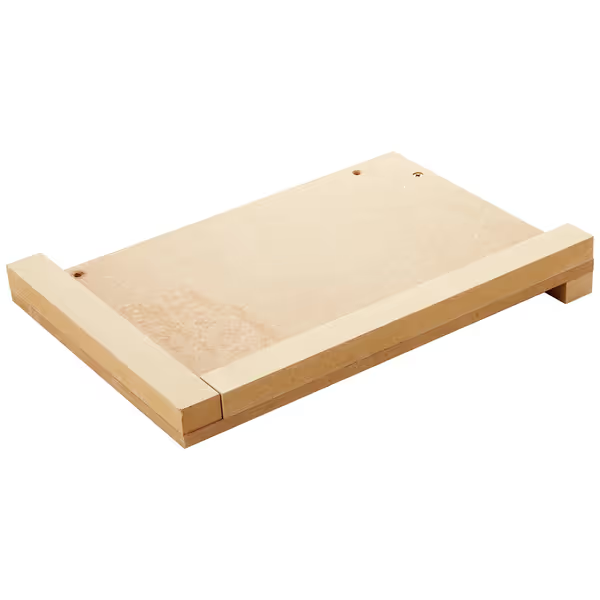
ESSDEE BH1 Bench Hook
5. Modular Mounting System: The Lee Precision Bench Plate
While designed for reloading, the Lee Precision Bench Plate solves a universal workshop problem: secure, removable mounting for precision tools. At $38.90, it's an ingenious solution for hand tool woodworkers needing to mount and remount precision tools like shooting boards or small vises without compromising bench integrity.
Why it matters: Every time you drill new holes in your benchtop, you're compromising its structural integrity and future flexibility. The Lee Bench Plate creates a standardized mounting interface that accepts multiple tools through a single mounting point.
Cost-per-capability breakdown: This $38.90 steel plate delivers 12" x 5" of stable mounting surface with pre-drilled patterns for multiple tool types. Consider the alternative: drilling separate holes for each accessory, risking misalignment and bench damage. The plate distributes load across your entire benchtop, adding rigidity while providing quick-change capability (something that would cost $100+ as a custom solution).
Standards compatibility: The Lee system uses standardized bolt patterns that work with common woodworking hardware. Its powder-coated steel construction ensures longevity, while the included elevator bolts create a secure connection without marring your benchtop. This is the epitome of modularity, creating interfaces that compound value through multiple tool integrations.
I've adapted this system for mounting small shooting boards and precision marking gauges. The ability to remove and reinstall tools in exactly the same position has transformed my workflow for repetitive tasks. It's proof that sometimes the best solutions come from outside your immediate craft ecosystem.
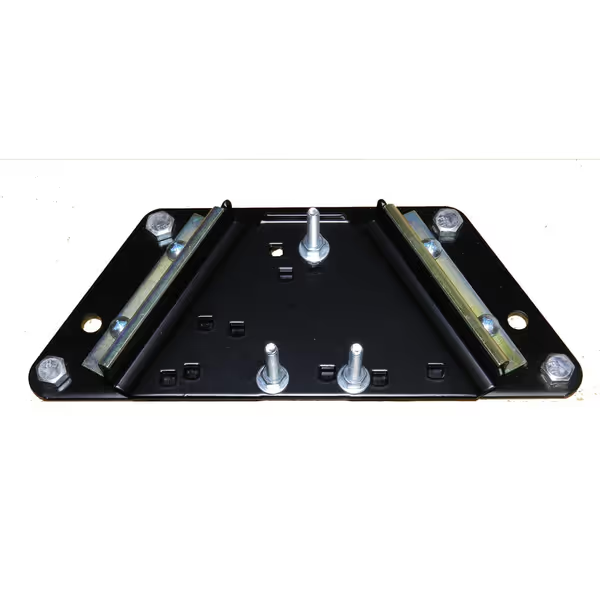
Lee Precision 90251 Bench Plate Kit
Building Your Workholding Ecosystem: The Bottom Line
Your workholding system isn't a single purchase, it's an investment that compounds value with each project. Start with one solid interface (like the Wilton vise), then add complementary accessories that expand your capability without creating silos. The best hand tool workholding systems share three characteristics:
- They're grounded in standards compatibility (20mm grid, 3/4" holes, T-tracks)
- They offer clear upgrade paths that preserve your initial investment
- They deliver repeatable precision that translates directly to your work quality
Remember: value is capability over time, not the receipt total on day one. When I started in that shared garage, I couldn't afford a "complete" system. I built a capable core and added interfaces that compounded my capability. Each upgrade removed a frustration without requiring me to scrap previous investments.
Your actionable next step: Audit your current workholding pain points. Is it inconsistent reference edges? Inability to hold irregular shapes? Time wasted on setup? Based on your specific bottleneck, choose one accessory that solves that immediate problem while fitting into a standards-based ecosystem. Start lean, add interfaces, and compound the capability. Your first purchase should be the one that unlocks the most projects with the least friction, probably a quality face vise or precision bench dogs.
Interfaces turn money into options. Choose wisely, and your shop tool bench will grow with you from first dovetails to heirloom furniture.

